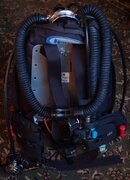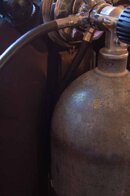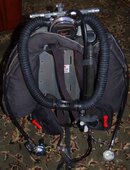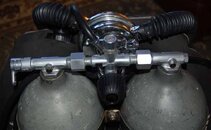Me too and that is why, A.) I have been diving a wing/BP since the mid 70s and B.) I decided to do some experimentation, practical experimentation and I came to a number of conclusions, they are mine, I force them on no one, which are 1.) the inner ear is not directly related to this subject but I cannot try any ears but mine so I cannot conclude my results are universal and 2.) keeping the regulator as close as possible to the back is good, pushing the tank down to excessivly low positons destroys trim and gains little or nothing in breathing performance. I like to rig for an optimal postion because as stated, diving does not take place ONLY in a horizontal positon, but much of it does.
It is my belief, owning several tech plates, that divers now are just the opposite, they tend to wear their tanks much to high resulting in tanks banging heads, poor trim, head down postion, instability and this coupled with the typical tech plate sitting the singles tank rather high on the bent ridge only exacerbates the problems.
The diagram I included in the previous post is a good starting point, your physic (body type and size) and equipment and diving style will dictate from there the optimal positioning. I don't panic if it is an inch or so higher. I do draw the line with the tank hitting my head as is the fashion now. The extended length of the Phoenix nozzle to some extent negates the "low tank" thing.
Why so high with the typical bent tech plate, the big deal is to be able to reach the valves, ho hum, important with doubles if diving in overhead, not so important with a single in open water. Just reach back and lift the tank and then reach over and behind with the other hand to the valve, big deal. Just my thoughts, others may vary for good reasons.
N












